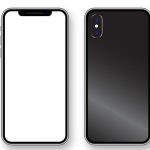Finding a device that strikes the perfect balance between performance, design, and affordability can be a challenge. However, Xiaomi Pad 6 seems to have cracked the code by offering an impressive array of specifications at an attractive price point.
From its powerful Snapdragon 870 processor to its immersive display and versatile accessories, the Xiaomi Pad 6 stands out as a remarkable value proposition for consumers. In this article, we will delve into the key features, design elements, drawbacks, and overall performance of the Xiaomi Pad 6.
Unleashing Power and Performance
At the heart of the Xiaomi Pad 6 is the robust Snapdragon 870 processor, complemented by 8 GB of LPDDR5 RAM. This combination ensures seamless multitasking and smooth performance, making it ideal for both daily tasks and intense gaming experiences.
The device boasts a fast UFS 3.1 internal storage, offering up to 256 GB of space for storing files, apps, and media. With such impressive specifications, the Xiaomi Pad 6 competes head-on with more expensive tablets in terms of processing power.
Also Read: Acer Aspire 5: A Reliable Budget Laptop with Balanced Specs
Immersive Display and Multimedia Experience
One of the standout features of the Xiaomi Pad 6 is its 11-inch LCD display. The tablet features Dolby Vision HDR and a stunningly smooth 144Hz refresh rate, providing vivid colors and fluid visuals.
The bezels are designed to perfection, allowing users to comfortably hold the tablet without any accidental touches. Additionally, the quad speakers, coupled with support for Dolby Atmos, deliver an exceptional audio experience, enhancing multimedia consumption and gaming sessions.
Connect your Xiaomi Pad 6 with your TV
Connect your Xiaomi Pad 6 to your TV and enjoy a full-screen viewing experience, you can utilize an HDMI to Type-C cable. The Xiaomi Pad 6 features a Type-C port, which can be connected to the HDMI port on your TV using a compatible cable. This setup allows you to mirror or extend the display of your Xiaomi Pad onto the larger screen of your TV.
Connecting your Xiaomi Pad to your TV can enhance your viewing experience, especially when you want to watch movies, videos, or play games on a bigger screen. By using an HDMI to Type-C cable, you can easily connect the Type-C port of your Xiaomi Pad to the HDMI port of your TV. This setup enables you to enjoy a full-screen display of whatever content is on your tablet.
Also Read: Garmin Instinct 2X Solar Edition Smartwatches
Design: Premium Aesthetics and Ergonomics
The Xiaomi Pad 6 exudes a premium look with its all-metal body, minimalistic design, flat surface, rounded corners, and rectangular edges. The tablet weighs approximately half a kilogram, but the weight distribution is such that it feels lighter in the hands.
The camera housing, inspired by the Xiaomi 13 Pro series, adds a touch of elegance, despite one of the lenses being a dummy. The tablet’s design offers a seamless integration with accessories such as the folio keyboard case and stylus, which further enhance its productivity capabilities.
Drawbacks and Trade-offs
While the Xiaomi Pad 6 impresses in various aspects, there are a few tradeoffs to consider. Firstly, it lacks 5G or LTE connectivity options, limiting its network capabilities. Additionally, the absence of a MicroSD card slot restricts storage expansion, leaving users reliant on the maximum 256 GB capacity.
There is no headphone jack either, although the device compensates for this by offering impressive audio quality through its quad speakers. Lastly, the tablet does not feature fingerprint unlocking, although its reliable face unlock the functionality adequately compensates for this omission.
Also Read: Exploring the Versatility of the Lenovo IdeaPad Flex3i Chromebook
Battery Life and Software
The Xiaomi Pad 6 incorporates an 8400mAh battery, ensuring a commendable battery life. With normal mixed usage, users can expect around two days of runtime, while gaming sessions may drain the battery more rapidly. The tablet comes bundled with a 33-watt charger, providing reasonable fast charging times.
On the software front, the device runs Android 13 with MIUI 14 out of the box, offering a host of tablet-optimized features such as multitasking, floating windows, and persistent dock for easy app switching. However, it is worth noting that the availability of major OS upgrades beyond the included Android 13 is uncertain.
Accessories: Scaling Productivity
One of the significant advantages of the Xiaomi Pad is its scalability through compatible accessories. The folio keyboard case allows users to transform the tablet into a productivity powerhouse, providing a comfortable typing experience. The stylus, ideal for note-taking and creative work, adds another dimension to the tablet’s functionality.
The stylus offers precise input and pressure sensitivity, making it suitable for tasks that require precision and creativity. With these accessories, the Xiaomi Pad 6 can seamlessly transition from a media consumption device to a productivity tool, catering to a wide range of user needs.
Also Read: Asus ROG Strix Car 18 : The Ultimate Gaming Laptop of 2023
Conclusion
The Xiaomi Pad 6 emerges as an enticing option in the tablet market, offering a compelling blend of power, affordability, and versatility. Its Snapdragon 870 processor, immersive display, and premium design make it a strong contender against higher-priced competitors.
While there are a few trade-offs, such as the absence of 5G/LTE connectivity and expandable storage, the tablet compensates with its impressive audio quality, face unlock feature, and compatibility with productivity-focused accessories. Overall, the Xiaomi Pad presents an excellent value proposition for consumers seeking a powerful and affordable tablet without compromising on performance and design.

Techspurblog is a blog dedicated to providing industry-leading insights, tips, tricks and tools on topics such as web design, app development, Digital Marketing, Education, Business and more. We also provide reviews of the latest tech products and services that can help you get the most out of your business.






